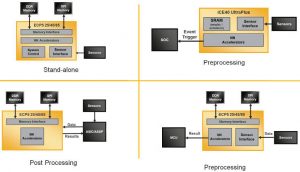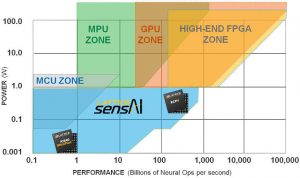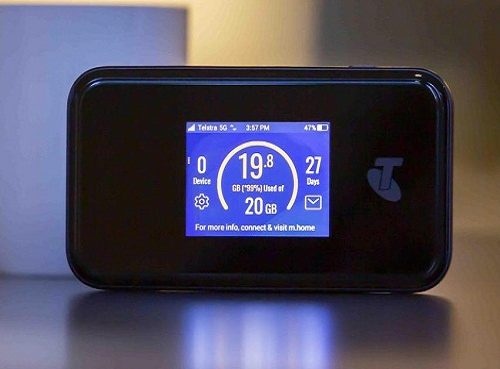Re-thinking neural network algorithms can deliver 10 times more performance from the same hardware, according to Lattice Semiconductor, which has overhauled its ‘sensAI‘ artificial intelligence-based vision processing intellectual property.
SensAI is aimed at edge AI – always-on local pre-processing of images to decide whether more powerful remote processing resources need get involved – reducing the need for network bandwidth and cloud-based analytics.
Human presence detection, specific object detection and object counting are all suitable applications, where AI in a camera can be left to monitor incoming images – for example, only sending an image stream to the network once specific visual conditions have been met – for a maximum of 1W additional product power consumption, and as little as 1mW, is Lattice’ target.
 Adding AI to an existing product to reduce comms and cloud processing needs
Adding AI to an existing product to reduce comms and cloud processing needs
Much of the 10x improvement, according to Lattice director of marketing Gordon Hands, has come moving from a move away from 16bit fixed-point inferencing to 8bit. “So we can have 2x multipliers and store 2x more intermediate values”, said Hands.
This could have reduced the accuracy of results, but, “we chose the tool flow training phase to assume 8bit fixed point inferencing, and the end result is just as good quality as 16bit”, said Hands.
Another part of the 10x was combining two layers within the convolutional neural network inferencing process.
 Lattice’ view of AI hardware requirements
Lattice’ view of AI hardware requirements
“We found that if we combined the ReLU and maxpool layers, we reduced the number of intermediate data by 4x, minimising the amount of data moved off chip and back on,” said Hands, adding that the remainder of the 10x is because “we got smarter on how we scheduled stuff into DDR memory”.
At the same time, Lattice has added Keras to its existing Caffe and TensorFlow neural network compiler options, and has released some application examples using VGG8 neural networks:
- Power-optimised human presence detection through a 5frame/s 64x64x3 CMOS image sensor, consuming 7mW on an iCE40 UltraPlus FPGA.
- Performance-optimised human counting through a 30frame/s 128x128x3 CMOS image sensor, consuming 850mW on an ECP5-85K FPGA.
Source: electronicsweekly










